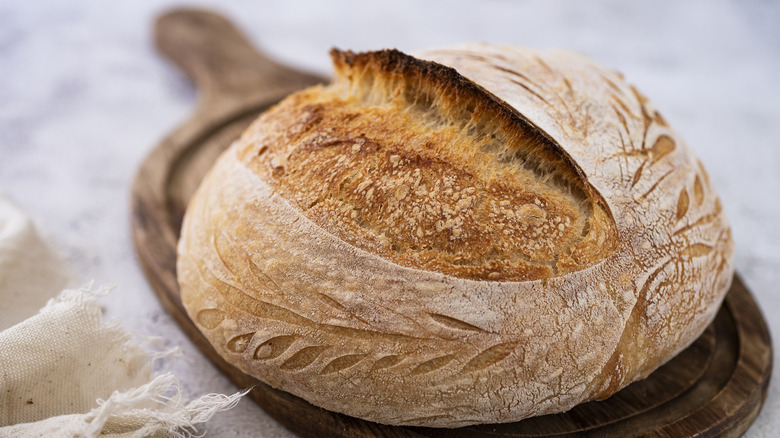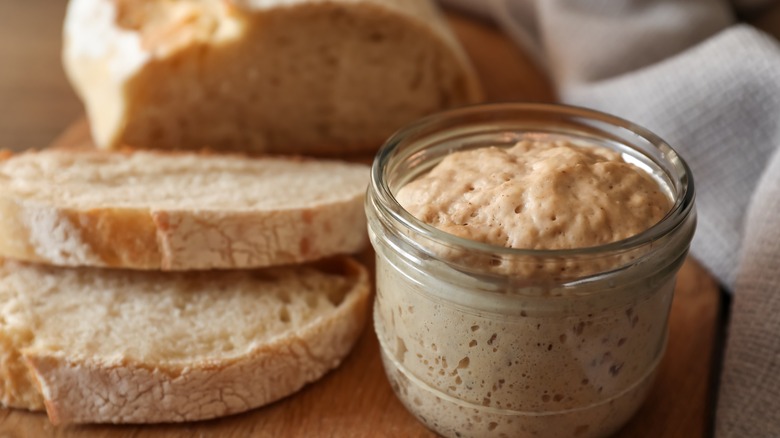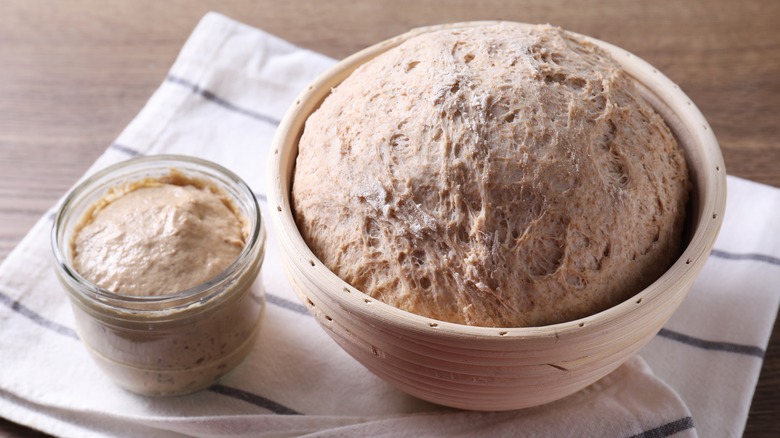The Temperature Mistake That's Ruining Your Sourdough
If you're interested in making sourdough bread, even after learning all the terminology and steps, there's one common mistake that may be tripping you up and ruining your final loaf. Temperature impacts the dough more than you might realize. If the dough becomes too warm or too cold, it can change the rising time and even ruin the final results. You can avoid this by keeping your bread ingredients in the proper temperature range. This will offer a better rise for light and fluffy sourdough, perfect for making toast, grilled cheeses, or 3-ingredient sourdough sandwiches.
If you are interested in baking sourdough bread at home, you'll quickly learn there's a lot more to it than throwing a few ingredients together and baking. It starts with making the starter, a mixture of water and flour that slowly gathers yeast until it's ready. Then, combine the ingredients, let the dough rise, shape the loaf, and do a second rise before baking. There are so many things you have to understand to master this process, like finding the best flour for a sourdough starter and learning what it means when your starter is ripe. Temperature is a crucial factor that affects how well your sourdough bread will rise, and how long it will take to do so.
Too hot or too cold will ruin the sourdough rise
The secret to a successful sourdough rise is proofing the dough at the optimal temperature. The best temperature for sourdough is between 76 and 80 degrees Fahrenheit. You may see this referred to as "room temperature" in recipe guides, but know that when it comes to sourdough, this relatively warm environment is ideal. The yeast can be the most active and ferment properly at that heat. If the dough is far below 76 degrees, it rises more slowly and can fall flat. But heating the dough isn't always the solution. If it's too warm, the fermentation process goes too quickly. This often leads to the dough collapsing and creating an uneven crumb after baking. The quick fermentation also makes the bread taste too sour.
The key is to stay right in that four-degree range or as close to it as possible. Remember that your kitchen temperature isn't necessarily the same as the inside of your dough. You can check on your dough's internal temperature by using a kitchen thermometer. Insert a probe thermometer in the center of the dough and check it periodically throughout the process to avoid it getting too hot or too cold. While the optimal range is small, the dough will still rise outside those parameters. However, if the temperature reaches below 68 degrees Fahrenheit or above 90 degrees Fahrenheit, you'll have a harder time using that dough.
What can you do if your dough isn't the optimal temperature
Making your sourdough too hot or too cold can ruin the rise, but keeping the dough at the perfect temperature can be tricky, especially if you live in a particularly warm or cold climate. Fortunately, there are some tricks you can use to maintain the right environment for the rise. If you're working in a colder area, you can warm up the water before adding it to the ingredients (just be sure not to heat it too much, or you'll risk losing the leavening power of your yeast). The dough can still rise at a slightly cooler temperature. It will just take more time, so adjust your baking plans accordingly.
On the flip side, working in a hot kitchen can make the sourdough rise faster and become more acidic. You can mitigate this by using cool water and placing the dough in the fridge to bring the temperature under 80 degrees Fahrenheit.


